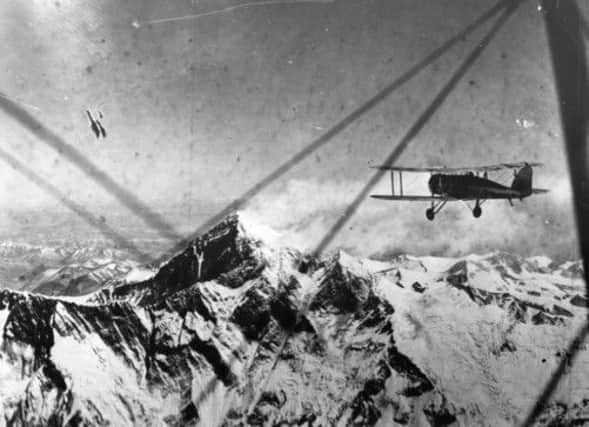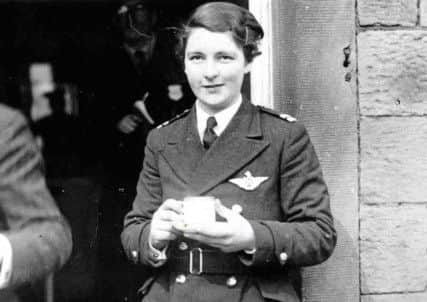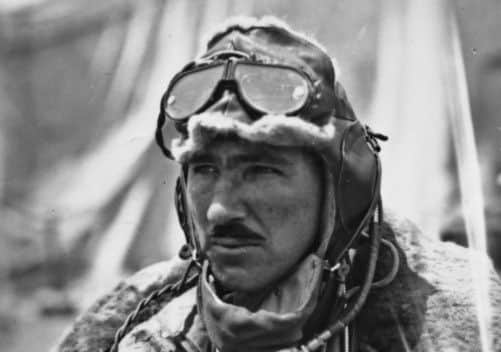New Hall of Fame for Scotland’s aviation heroes


Now the legacy of key figures in the development of Scottish aviation is to be honoured in a new Hall of Fame at Prestwick Airport. The initiative will be launched today to mark the 100th anniversary of flights from the Ayrshire airport as part of the run-up to the inaugural Prestwick World Festival of Flight next month. A celebration dinner will also be held tonight near where the first aircraft landed on 25 July, 1913.
The initial five “inductees” to the Hall of Fame include the world’s first woman commercial airline pilot, the father of radar and a pair who were the first to fly over Everest.
Advertisement
Hide AdFurther people and organisations with links to Scotland who have made “outstanding contributions to the development of aviation, locally and internationally” will be added annually.


These will be displayed at the airport, but organisers hope to create a permanent gallery to house the project.
Similar halls have been established in the United States, Canada and Australia.
Among those first to take their place is Winifred Drinkwater, who captained a Glasgow to Campbeltown flight for Midland and Scottish Air Ferries in April 1933, becoming the first woman to pilot a scheduled service.
Weeks earlier, David McIntyre and Douglas Douglas-Hamilton, the 14th Duke of Hamilton became the first people to fly over the world’s highest mountain.


They also created the aircraft firm Scottish Aviation and Prestwick Airport.
Advertisement
Hide AdThe others to be honoured are Sir Robert Watson-Watt, who pioneered the development of radar, and test pilot Captain Eric “Winkle” Brown, who flew more aircraft types than anyone and made the first jet aircraft landing on an aircraft carrier.
Festival chair and co-curator George Kerevan said: “Scotland is very bad at recognising its achievements in the field of aviation or the people who made them. We had the first female commercial airline pilot, the world’s greatest test pilot, Scots were the first to fly over Everest and a Scot invented radar. The Scottish Aviation Hall of Fame seeks to honour these achievements and inspire the next generation.”
Advertisement
Hide AdDougal McIntyre’s son, the author of Prestwick’s Pioneer about his father David, was delighted to hear of his inclusion.
He said: “He was the driving force behind Prestwick and it is fitting he should be included. The idea of doing something to record that history would be very interesting to the public.”
Backing for the initiative also came from National Museums Scotland. Principal curator of transport Louise Innes said: “We are delighted to see the pioneers of Scottish aviation being honoured in this way.
“We are especially pleased to see Douglas Douglas-Hamilton, 14th Duke of Hamilton, receiving recognition in the Hall of Fame as we display products from Scottish Aviation, the company founded by him and fellow inductee David McIntyre, including the Twin Pioneer and the Jetstream, at our National Museum of Flight in East Lothian.”
Today’s flypast will commemorate the centenary of flying from Prestwick. The first Royal Flying Corps BE2a aircraft touched down at Monkton Meadows, which is now part of the airport’s runway.
A Typhoon aircraft based at RAF Leuchars in Fife, piloted by Flight Lieutenant Andrew Durrel, is due to fly low over the airport at around 11:30am. Spectators are advised the best vantage point is from north of the runway at Monkton.
Advertisement
Hide AdThe dinner takes place at Lochgreen House, the former home of Mr McIntyre in nearby Troon, which is now a hotel.
Mr Kerevan said: “Prestwick’s 100th birthday deserves to be celebrated everywhere. Prestwick Airport saved Britain during the Second World War by shepherding across the Atlantic tens of thousands of Allied combat aircraft.
Advertisement
Hide Ad“Today, when you fly the Atlantic, even from Heathrow, it is national air traffic control at Prestwick that gets you there.”
DAVID McIntyre and Douglas Douglas-Hamilton are two of the most significant figures in the development of Scottish aviation, launching an aircraft firm and Prestwick Airport after completing the first flight over Everest. Mr McIntyre, an air force flight lieutenant, and the then Marquis of Clydesdale, who commanded the 602 City of Glasgow squadron of the Royal Auxiliary Air Force, started a pilot training school at Prestwick in 1935 which developed into an aircraft assembly and repair firm.
After Prestwick’s expansion during the Second World War to handle incoming US and Canadian military aircraft, the airport became a transatlantic passenger gateway.
Their company, Scottish Aviation, designed and built aircraft such as the short take-off and landing Pioneer.
SIR Robert Watson-Watt, a descendent of steam engine developer James Watt, pioneered work on radar, which helped win the Battle of Britain in 1940.
Five years earlier, he successfully used short wave radio to detect a bomber, with the trial leading to the Brechin-born scientist going on to head the creation of Britain’s early-warning radar chain along the south-east coast of England.
Advertisement
Hide AdKnown as Chain Home, it gave warning of incoming attacks by the Luftwaffe in time to scramble RAF fighters.
In 1940, Watson-Watt also co-invented the cavity magnetron, which produced a compact source of short-wave radio waves that led to more powerful radars.
Advertisement
Hide AdThis helped detect U-boats during the Battle of the Atlantic, and the technology is still used as a source of heat in microwave ovens.
WINIFRED Drinkwater became the world’s first female commercial pilot, despite her boss doubting whether anyone would want to be flown by a woman. Securing her pilot’s licence aged 19, she was hired by Midland & Scottish Air Ferries in 1933 because owner John Sword was desperate for pilots. Ms Drinkwater initially flew on the Glasgow-Campbeltown route, then helped to launch the first Glasgow-London flights, and also piloted the first air ambulance services to the Western Isles.
She also flew press photographers along Loch Ness in their quest for Nessie and received admiring letters such as one addressed to “Winnie Drinkwater, Air Ace, Scotland”.
However, she retired after just four years when she became engaged to aircraft manufacturer Short Brothers’ director Francis Short. They met at Renfrew Airport while she was dismantling an engine, covered in grease.
CAPTAIN Eric “Winkle” Brown became a test pilot after HMS Audacity, the escort carrier he was serving in with Royal Navy Fleet Air Arm, was sunk in 1941.
The Leith-born aviator was posted to the Royal Aircraft Establishment and flew a record 487 types of aircraft.
Advertisement
Hide AdHe pioneered the art of landing fast aircraft on carriers, tested captured German aircraft and helped develop tactics for destroying V1 missiles. Mr Brown’s fluent German and technical knowledge led to him being involved in interrogating senior Nazis when the war ended.
He went on to test early British and American jets before returning to active service. Mr Brown helped reform Germany’s post-war naval aircraft units, becoming friendly with many of his old adversaries.
Advertisement
Hide AdHis last posting was as head of the Royal Navy air station at Lossiemouth in Moray.
Flying high
PRESTWICK World Festival of Flight runs from 30 August to 8 September in what organisers hope will become an annual celebration of Scottish aviation.
Claiming to be “the world’s first true festival of flight”, it will include air displays, films and book events, drama and music.
Prestwick was once the UK’s transatlantic gateway and remains the centre of the Scottish aerospace industry, employing 9,000 people.
The festival opens with a son et lumiere spectacular at the airport and ends with a fashion show and aviation books and comics festival comprising 25 talks, including on Airfix model kits and the Scottish Air Ambulance service.
Festival chair George Kerevan said: “It will be an exciting new way of exploring aviation and space travel. We have planes, pilots, films, books, music, history and debates over ten days. We want to get young people to think about a career in aerospace.”